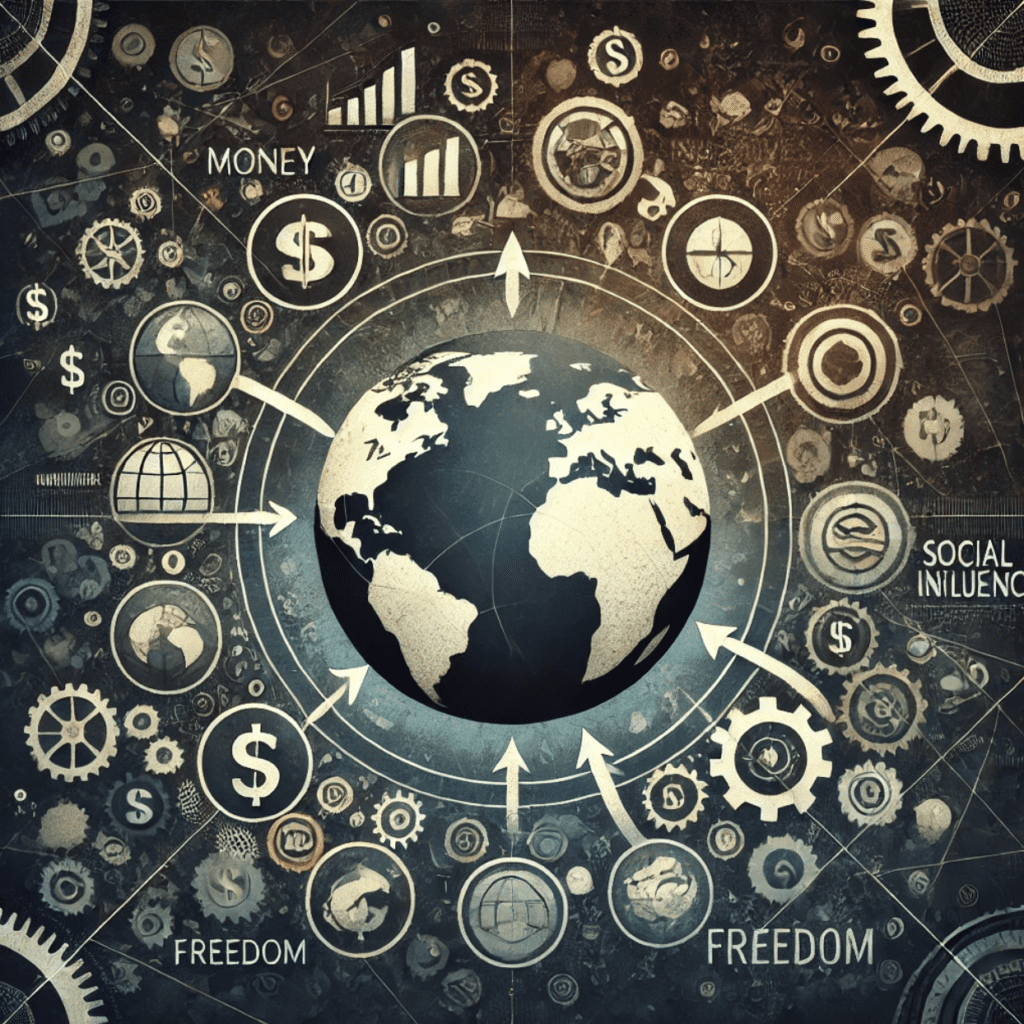People don’t just do things.
They do what makes sense to them.
And what makes sense is almost always tied to incentives.
Want to know why someone acted the way they did?
Follow the incentive.
Whether it’s:
- Money
- Status
- Validation
- Peace
- Or purpose
every move is made for a reason.
And if you can spot the reason, you can predict the next move.
This is how the world really works.
The winners?
They design their lives around this.
Let’s break it down.
What Is an Incentive?
An incentive is anything that makes a person want to do something – or avoid something.
It could be:
-
Getting paid
-
Getting noticed
-
Avoiding pain
-
Feeling proud
-
Gaining status
You’re chasing incentives even when you don’t realize it.
So is everyone else.
Why Incentives Predict Behavior
People don’t act randomly.
They respond to reward and punishment.
If you understand what someone wants (or wants to avoid), you can guess their next move before they even make it.
This works in:
-
Business
-
Marketing
-
Even global economics
Example:
If a store says, “Buy 1 get 1 free,” what happens?
Everyone runs to get the deal.
Not because it’s logical.
But because the incentive triggers urgency and reward.
Same with social media, jobs, even wars.
It all comes back to what people think they’ll get or lose.
Economic Behavior Is Incentive-Driven
Look at how governments and businesses move.
They use incentives like:
-
Tax breaks → to boost spending
-
Interest rate cuts → to spark borrowing
-
Grants → to push industries like clean energy
These moves guide behavior.
They make people want to act a certain way.
Smart players watch these moves closely – because they show where the money and power will shift next.
Social Incentives Run the Internet
Ever wonder why people post certain things online?
It’s for likes.
For clout.
For social points.
Likes = status.
Comments = validation.
Followers = power.
Social media runs on social incentives.
Even “authentic” posts often chase one thing: approval.
It’s not just online.
Trends, beliefs, and groupthink are also social incentives in action.
People copy the herd because it feels safe…
Or because it earns them points in their group.
Want to build a brand or movement?
Create something that rewards your tribe with:
- Identity
- Belonging
- Or admiration.
Value-Based Incentives Are Quiet but Powerful
Sometimes people don’t act for money or approval.
They act because it aligns with their values.
This includes things like:
-
Donating to charity
-
Helping others
-
Starting movements
-
Refusing to sell out
This is harder to spot from the outside, but it’s just as real.
Brands that align with deep values create loyal fans – not just customers.
And people who act on values tend to be more:
- Driven
- Focused
- And fulfilled
because their incentive is internal, not external.
Intrinsic Incentives Are the Hidden Fuel
Some people do things just because they love doing them.
They’re not chasing applause.
They’re not chasing a check.
They’re chasing mastery, meaning, or joy.
That’s intrinsic motivation – and it’s the most durable kind.
Artists, athletes, entrepreneurs… the ones who don’t quit?
They have this.
They’d do it even if no one was watching.
If you want to build something that lasts, don’t just rely on external rewards.
Build it in a way that rewards you for doing the work.
How to Design Smart Incentives
If you want to move people – in business, relationships, or life – build the right incentives.
Here’s how:
-
Tie the reward to the desired action.
If you want fast action, give a clear short-term reward. -
Use social proof.
Show that others have already succeeded by doing what you want them to do. -
Appeal to values.
Make the action feel aligned with their identity or purpose. -
Mix internal and external rewards.
Example: A gym membership gives external results, but feeling stronger is the internal reward that keeps people coming. -
Make the path feel winnable.
If it feels out of reach, people won’t start. But if it feels like a game they can win, they’ll stay locked in.
Incentive design is the real secret behind:
-
Growth
-
Repeat buyers
-
Loyal fans
-
And long-term success
Why This Matters for You
Once you see how incentives work, you can:
-
Predict what others will do
-
Understand why people act the way they do
-
Build systems that move with ease
-
Avoid traps designed to exploit your attention
Most people go through life reacting to incentives they don’t even notice.
You’ll move differently once you can see the game.
Final Words
People chase what they’re rewarded for.
They avoid what they’re punished for.
That’s it.
Incentives explain:
-
Why people buy
-
Why people cheat
-
Why people stay stuck
-
Why trends explode
-
Why movements rise
-
Why empires fall
Want more control?
Want to build something that works?
Start by asking: “What’s the incentive here?”
Once you master that question, everything gets clearer.
Want to Master This in Business?
Learn how to build income systems around what actually drives people:
- Incentives
- Identity
- Energy
- And structure.
This program teaches you how to design offers that people want to say yes to.
It includes:
✅ Real examples
✅ Proven frameworks
✅ And tools that show you how to turn clarity into cash
Disclaimer: Results vary. This program teaches mindset, marketing, and sales strategies. It’s educational in nature and not a guarantee of earnings. Your results depend on your effort, skills, and application of the material.
You May Also Like:
11 Traits Of A Normie NPC
How To Smash Competition And Chump Tests
The Shadow Self: Unveiling the Hidden Side of Human Nature
See How Easily You Can Master the Art of Seduction
7 Ways to Stop Worrying What People Think About You
11 Playboy Traits All Legendary Bon Vivants Share
Why 99% of People Stay Average: The Brutal Truth About Practice vs. Theory
The Types of People You Must Avoid at All Costs
My name is Mister Infinite. I've written 600+ articles for people who want more out of life. Within this website you will find the motivation and action steps to live a better lifestyle.

